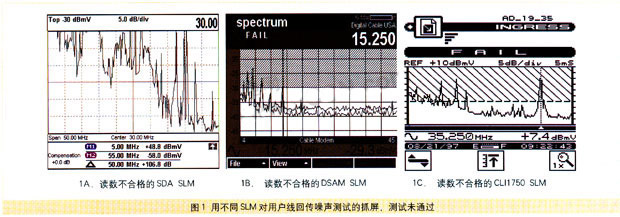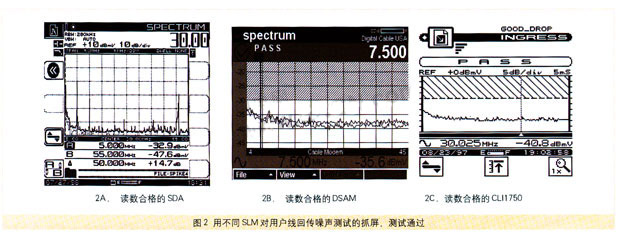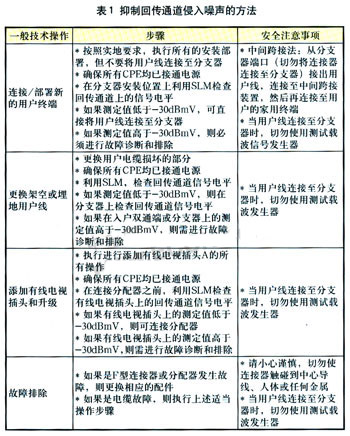Tag: Cable TV Return Noise
This article refers to the address: http://
1 Introduction
In many cases, the cable TV user can connect to a new cable TV distributor or add a cable plug to make the return channel intrusive. This noise can cause interference to the backhaul system and may result in data loss in the digital voice service and high speed Internet service provided by the two-way HFC.
2 return noise suppression method
As with the transmission of signals from the headend to the user's home terminal, any radio frequency (RF) signals transmitted to the eight cable television systems in the user's home environment can be transmitted back to the headend. In addition, the "funnel effect" causes back-transmission noise to accumulate to the head end. System monitoring indicates that these interfering signals will generate network alarms, high-speed Internet access and other interactive services, causing customer complaints.
In order to minimize service interruption, operators must standardize the deployment methods and service delivery methods of user home terminals. A good practice adopted by Comcast (COMCAST) in some places is to focus on solving the common problems of coax eight-hub systems caused by intrusive noise in the return channel. This approach can be used to solve problems encountered by various businesses. Before the subscriber line is connected to the splitter, the signal level meter (SLM) is used to ensure that there is no backhaul noise on the subscriber line, thus reducing the possibility of uplink transmission of the backhaul noise.
2.1 Maintenance is a safety consideration for personnel
The subscriber line must be connected to the splitter at the end, so it may be necessary to rethink the order in which the home terminal is deployed to minimize back-and-forth routing on the column or traverse cabling. When using the intermediate jumper method, it is especially important to pay attention to safety. Do not lean the cable holder against the connecting rod and do not wrap it too tightly. Safety precautions using intermediate bridging methods must be fully discussed when conducting safety training.
2.2 Detection and elimination of intrusive noise
Install all customer premises equipment (CDE), connectors, distributors, and directional couplers between the splitter and the CPE before connecting the subscriber line to the splitter. Plug all power to the devices connected to the cable system (television, modem, set-top box, VCR, etc.). Then, the SLM is used to check for intrusion noise on the subscriber line backhaul system. If the signal level in the 5 to 65 MHz band is lower than -30 dBmV, it means that the intrusion click is acceptable, and then the brancher connection can be performed. If the signal level is above -30dBmV, the subscriber line must be connected to the splitter after the problem has been diagnosed, identified, and resolved. Note: The example used is the JDSU/Acterna SLM, and other brands of SLM can be used in practice.
Example 1 - User line return noise reading is unqualified

Figure 1 shows a screenshot of the SDA digital analyzer, DSAM, and CLI 1750 SLM with user line return noise readings that do not meet the requirements (above -30dBmV). If the return channel measurement is above -30 dBmV, the problem must be diagnosed, identified, and resolved before connecting the subscriber line to the splitter.
Example 2 - User Line Return Noise Reads Qualified

When checking the returning beep, the SLM shows that the signal level in the 5 to 42 MHz band is not higher than -30 dBmV. Since the reading is below -30dBmV, there is no need to troubleshoot and the subscriber line can be connected directly to the splitter. A specific example is shown in Figure 2.
Tip: If you need to use the test carrier signal to find the cable plug or subscriber line to which a line is connected, do not use the carrier signal generator with the subscriber line connected to the splitter. Test carrier signal generators (such as Toner, TDR, etc.) send strong interfering carriers to the cable system. The subscriber line must be disconnected from the cable television system before using any of the test carrier/signal generating devices.
Table 1 lists the methods for suppressing ingress noise from the return channel. It can be effectively used to deploy new user terminals, replace overhead or buried subscriber lines, add cable plugs and upgrades, and troubleshoot users.

2.3 Appropriate use of filters and notches
Proper use of filters or notches is also critical to reducing the effects of ingress noise and interference on the return channel. If the technician cannot immediately solve the problem of the user terminal noise of the access user, the device can use the high-pass filter in the node deployment process in order to temporarily solve the click problem of the home terminal injection. The technical planning department will issue corresponding implementation requirements for the use of filters and notches in the local area. After the fault is detected and eliminated, the filter and notch are removed.
3 Conclusion
Backhaul noise suppression takes into account the amount of work required to perform the installation in the system at a particular time, and the extent to which all of these installation operations will affect the users on the network when connected to the currently running system. Before opening a service, make sure that there is no intrusion noise on the subscriber line in order to achieve the expected customer satisfaction with the interactive service.
Electric Infrared Ceramic Cooker
Electric Infrared Ceramic Cook,Ceramic Cookware,Electric Ceramic Cooker,Kitchen Ceramic Electric Infrared Cooker
Shaoxing Haoda Electrical Appliance Co.,Ltd , https://www.hotplates.nl